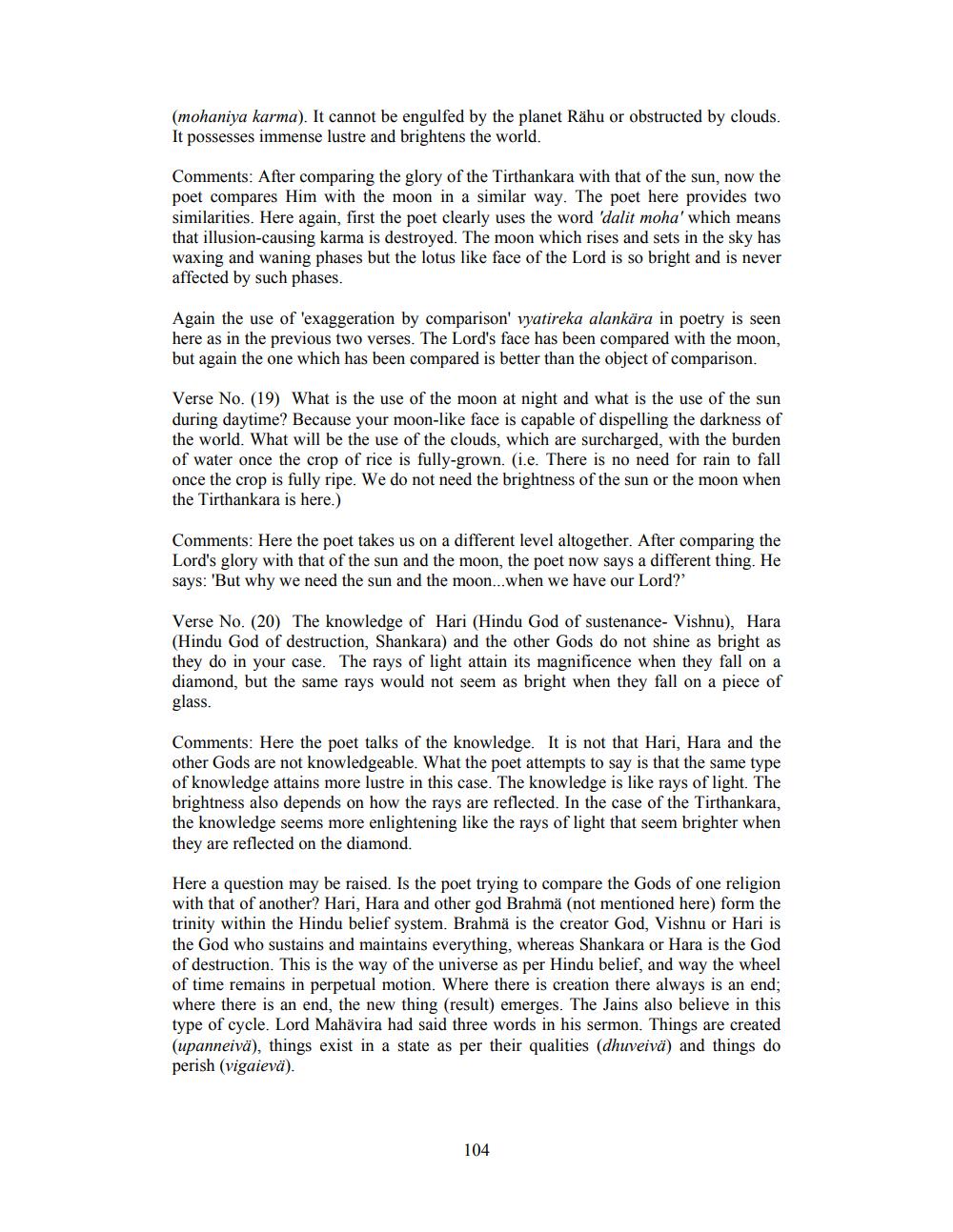________________
(mohaniya karma). It cannot be engulfed by the planet Rähu or obstructed by clouds. It possesses immense lustre and brightens the world.
Comments: After comparing the glory of the Tirthankara with that of the sun, now the poet compares Him with the moon in a similar way. The poet here provides two similarities. Here again, first the poet clearly uses the word 'dalit moha' which means that illusion-causing karma is destroyed. The moon which rises and sets in the sky has waxing and waning phases but the lotus like face of the Lord is so bright and is never affected by such phases.
Again the use of 'exaggeration by comparison' vyatireka alankära in poetry is seen here as in the previous two verses. The Lord's face has been compared with the moon, but again the one which has been compared is better than the object of comparison.
Verse No. (19) What is the use of the moon at night and what is the use of the sun during daytime? Because your moon-like face is capable of dispelling the darkness of the world. What will be the use of the clouds, which are surcharged, with the burden of water once the crop of rice is fully-grown. (i.e. There is no need for rain to fall once the crop is fully ripe. We do not need the brightness of the sun or the moon when the Tirthankara is here.)
Comments: Here the poet takes us on a different level altogether. After comparing the Lord's glory with that of the sun and the moon, the poet now says a different thing. He says: "But why we need the sun and the moon...when we have our Lord?'
Verse No. (20) The knowledge of Hari (Hindu God of sustenance- Vishnu), Hara (Hindu God of destruction, Shankara) and the other Gods do not shine as bright as they do in your case. The rays of light attain its magnificence when they fall on a diamond, but the same rays would not seem as bright when they fall on a piece of glass.
Comments: Here the poet talks of the knowledge. It is not that Hari, Hara and the other Gods are not knowledgeable. What the poet attempts to say is that the same type of knowledge attains more lustre in this case. The knowledge is like rays of light. The brightness also depends on how the rays are reflected. In the case of the Tirthankara, the knowledge seems more enlightening like the rays of light that seem brighter when they are reflected on the diamond.
Here a question may be raised. Is the poet trying to compare the Gods of one religion with that of another? Hari, Hara and other god Brahmä (not mentioned here) form the trinity within the Hindu belief system. Brahmä is the creator God, Vishnu or Hari is the God who sustains and maintains everything, whereas Shankara or Hara is the God of destruction. This is the way of the universe as per Hindu belief, and way the wheel of time remains in perpetual motion. Where there is creation there always is an end; where there is an end, the new thing (result) emerges. The Jains also believe in this type of cycle. Lord Mahavira had said three words in his sermon. Things are created (upanneivä), things exist in a state as per their qualities (dhuveivä) and things do perish (vigaievä).
104




